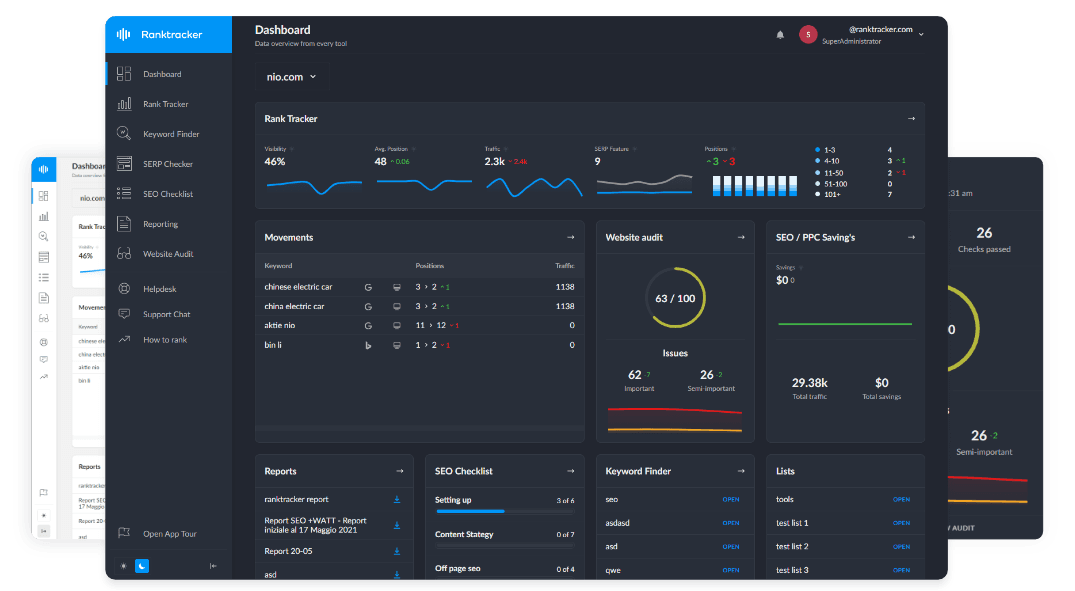Intro
An email marketing funnel is a strategic framework that guides your subscribers through key stages of the customer lifecycle. Email funnels use segmentation, automation, and behavioral triggers to deliver targeted content tailored to the unique needs of subscribers at every point in their journey.
An effective funnel builds trust, educates prospects, converts interest into action/sales, and builds long-term brand loyalty.
By the end of this guide, you’ll learn how to build a high-converting email funnel that turns lukewarm leads into raving fans (and keeps them coming back for more).
5 Stages of an Email Marketing Funnel
A complete email funnel follows the natural path a customer takes from first discovery to repeat purchase. Here’s a comprehensive breakdown of the five critical stages:
1. Awareness
Your customer has just discovered your brand, maybe through a blog post, social media ad, opt-in form, or a referral. Your job here is to make a strong first impression and set expectations for future communication.
Awareness stage emails can be any of these:
- Emails with educational content like blog posts, product guides, and demos that address customer pain points.
- Newsletters that position your brand as a thought leader. You can also share case studies, industry reports, and other helpful resources.
- Welcome emails that introduce your brand to new subscribers. You can even add a little welcome gift, such as discounts, bonus offers, or a free trial, to thank them for joining your email list. Here’s an example from Saje Wellness.

Your emails should focus on building trust and delivering value at this stage: no hard selling or salesy content. You can also include a clear explanation of your unique selling proposition in your emails to position your brand as a trusted resource from the outset.
2. Interest
Now they know you exist. This is where you stir curiosity and show how your product fits into their goals.
The All-in-One Platform for Effective SEO
Behind every successful business is a strong SEO campaign. But with countless optimization tools and techniques out there to choose from, it can be hard to know where to start. Well, fear no more, cause I've got just the thing to help. Presenting the Ranktracker all-in-one platform for effective SEO
We have finally opened registration to Ranktracker absolutely free!
Create a free accountOr Sign in using your credentials
You need segmentation (more on that later) to do this right.
Not every email subscriber wants the same thing. Use data from sign-up forms, website analytics, and previous interactions to understand what each user wants and tailor your messaging.
For example, if you’re a marketing agency and a subscriber downloaded a guide on SEO, follow up with tips, tools, and case studies related to that topic.
3. Consideration
Potential customers in the consideration stage actively check your products and services to see if they meet their needs. They are comparing vendors, researching solutions, or simply looking for reasons to trust your offer. Your emails should address their doubts and make them want to buy from you.
For SaaS and B2B brands, this is where the sales funnel for b2b becomes even more personalized, with content tailored to different decision-makers or industry segments. For instance, this email from Miro is targeting project managers.

The All-in-One Platform for Effective SEO
Behind every successful business is a strong SEO campaign. But with countless optimization tools and techniques out there to choose from, it can be hard to know where to start. Well, fear no more, cause I've got just the thing to help. Presenting the Ranktracker all-in-one platform for effective SEO
We have finally opened registration to Ranktracker absolutely free!
Create a free accountOr Sign in using your credentials
Product demos, customer testimonials, comparison guides, FAQs, and detailed case studies are also highly effective in this stage.
4. Conversion
This is the stage where prospects become paying customers. Here, your emails should focus on clear, compelling calls-to-action (CTAs) that make it dead easy to buy, book, or sign up.
Use limited-time offers, personalized discounts, and abandoned cart emails to increase conversions. Make sure your emails are concise, persuasive, and action-oriented.
For instance, if your email campaign is for subscribers to attend your upcoming webinar, every element of the emails should persuade users to click the ‘sign up’ button. Include direct links to the event page and clear instructions to make the process even more seamless.
Lastly, reassure your subscribers. Tell them about your money-back guarantee, secure payment system, and five-star support, to give them peace of mind
5. Retention
Some marketers stop engaging customers after the sale. That’s a huge mistake. The real money is in repeat purchases and loyal customers.
So your retention emails should focus on delivering ongoing value to keep the customers coming back. Send regular check-ins and feedback requests to show that you care about their experience and are committed to continuous improvement.
For SaaS and subscription businesses, proactive support, invitations to useful webinars and other events, and regular check-ins will go a long way. Ecommerce brands can send personalized recommendations, usage tips, VIP offers, and loyalty rewards to drive repeat purchases. The key here is to maintain relevance and build a genuine relationship beyond the initial sale.
Tips to Create a Solid Email Funnel
Below are some of the effective strategies to help you build a high-performing email funnel:
1. Set Clear Goals
Before you write a single subject line, set clear goals on what you want the target audience to do at each stage of the funnel. Are you trying to drive more sign-ups for your product or webinar? Or maybe you want to encourage repeat purchases.
Define your goals and set measurable KPIs (such as open rates, click-through rates, and conversion rates) to track your progress.
Your goals for each email funnel stage will also influence your content strategy, segmentation, and automation techniques. This ensures that every email you send out serves a specific purpose in the customer cycle.
2. Segment Email List Correctly
As mentioned earlier, segmentation allows you to send targeted email drip campaigns to subscribers based on their profile, interests, or stage in the customer journey. It also helps you send more relevant and timely messaging.
For instance, new subscribers can get a welcome email, while returning customers can receive personalized product recommendations or loyalty offers.
Divide your list based on key criteria such as purchase history, engagement level, pain points (if you have several product lines), and demographics. You can start simple with 2-3 segments and build as you grow.
You can also use dynamic segmentation, like tags and scoring systems, to automatically reassign users to new segments as they interact with your marketing emails. For example, new leads receive educational content, while repeat customers get loyalty offers.
3. Address Pain Points with High-Quality Content
Every stage of your email campaign funnel should focus on addressing a genuine issue your subscriber is facing. That’s how you build trust and move them closer to conversion.
To get more insights into customer pain points, check for common questions/complaints in your support inbox. You can also use polls or surveys to ask for customer feedback after sign-up. Tools like Google Analytics 4 or heatmaps can also give you insights into customer behavior.
Once you’ve identified those key problems, build content that answers them clearly and confidently. Here’s what to send:
- How-to guides that break down solutions step-by-step
- Swipe files, cheat sheets, or templates that they can copy and implement
Skip generic messaging or jargon. If your audience is struggling with lead generation, don’t just tell them to “optimize their sales process.” Show them exactly how to do it, with proven tools, links, and frameworks that have worked for similar businesses.
Also, use a mix of visuals, short videos, GIFs, and audio snippets to make your emails even more engaging.
4. Use Marketing Automation Software to Sequence Emails
A modern email marketing platform like GetResponse can help you automate email sequences from the first welcome email to re-engagement campaigns. The best part? You only have to build these sequences once.
The best marketing automation tools offer visual workflow builders, which make it easier to create, manage, and automate processes using a drag-and-drop interface. This can also help you spot gaps, overlaps, or broken sequences in your automation.
These also help you automate campaigns by tracking user engagement levels and how they interact with your business, i.e., the products they view (for ecommerce) and the features they use (for Saas brands). You can then set triggers to ensure you send relevant product recommendations at the right time.
5. Test, Analyze, and Optimize
Use the analytics on your email marketing platform to monitor key metrics such as open rates, click-through rates, conversions, unsubscribe rates, and overall campaign performance. But that alone is not enough.
You need to continuously test and optimize your funnel to get the most out of your email marketing strategy.
A/B test everything from subject lines to button colors, send times, and different content formats to know what works best for your target audience. Then, use the insights to tweak your future campaigns.
You can even implement AI agents to automate both the tests and decisions, so you don’t have to manually track how each test goes. This allows you to use AI to speed up your tests, learn what works for your audience, and implement it for current and future campaigns.
Email Marketing Funnel Examples to Emulate
Let's look at two brands with an excellent email funnel strategy:
Example 1: Grammarly
Grammarly has built a structured email series that moves users from sign-up to a premium subscription. Below is what your email inbox may look like for the first 60 days.

It kicks off with a warm welcome (You + Grammarly = Ready for action), followed by onboarding emails that spotlight core features and tips.

As users interact, Grammarly sends weekly writing stats, usage reminders (like nudging users who stopped using the browser extension), product tips, and milestone updates to reinforce value and engagement.

They send limited-time offers paired with direct, benefit-focused CTAs to drive upgrades.

Then, after purchase, users unlock additional value from the product and receive priority support.
Example 2: Sephora
Like Grammarly, Sephora’s email funnel also aims to turn first-time browsers into loyal beauty shoppers. It starts with a welcome series that introduces the brand, shares skincare or makeup tips, and offers a new-subscriber discount.

As shoppers explore the site, Sephora sends product recommendations based on past purchases or browsing behavior, along with timely restock alerts, abandoned cart reminders, and new arrivals alerts.

After purchase, customers receive beauty guides, satisfaction surveys, loyalty rewards, early access to new products, and even birthday emails to keep them glued to the brand.

The All-in-One Platform for Effective SEO
Behind every successful business is a strong SEO campaign. But with countless optimization tools and techniques out there to choose from, it can be hard to know where to start. Well, fear no more, cause I've got just the thing to help. Presenting the Ranktracker all-in-one platform for effective SEO
We have finally opened registration to Ranktracker absolutely free!
Create a free accountOr Sign in using your credentials
You can see how each brand combines behavioral triggers, targeted content, and automation to deliver relevant, timely, and engaging emails throughout the customer lifecycle. You’ll need to do something similar for your next email marketing campaign.
Conclusion
Email funnels can help brands build lasting relationships, drive consistent revenue, and outpace their competition.
For best results, set clear and measurable business goals, use segmentation and automation, and create valuable content that addresses users’ pain points at every stage of the funnel. And don’t forget to continuously test and optimize to improve your customer experience and conversion.
Use these strategies to transform your email marketing funnel into a reliable growth engine that nurtures prospects, delights customers, and grows your business.

